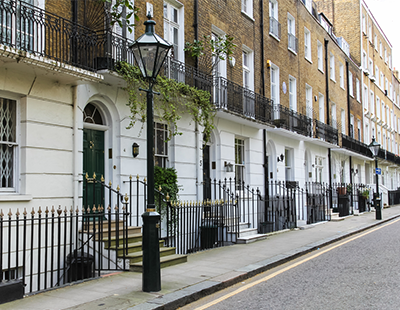
Rents across Great Britain rose by an average of 8.3 per cent over the last 12 months, marking a gradual slowdown from late spring when rental growth peaked at 11.5 per cent.
The figures come from Connells-owned lettings agency Hamptons.
This means that rents are 15.7 per cent above where they were when Covid struck. Despite the rate of growth slowing for the third month in a row, July’s figure still marks the sixth strongest annual increase recorded during the last decade.
Growth has also been driven by a recovery in rents being achieved for smaller urban homes. One-beds rose by an average of 10.4 per cent year-on-year, while four-beds recorded growth of 6.6 per cent annually. The average one-bed now costs 13.6 per cent more than pre-Covid times compared to four-beds that are 17.6 per cent above pre-Covid levels.
Inner London continues to record faster rental growth than anywhere else in the country by a significant margin. Here, rents are up 33.6 per cent on the same time last year.
This rapid rate of growth reflects the post-Covid trough it’s being compared against. Hamptons says this will work its way through in a couple of months, likely bringing down the year-on-year figure significantly. As such, it leaves average rents only 1.5 per cent above where they were in January 2020 and still on par with July 2016.
The number of homes available to rent continued to fall in July. There were 9% fewer rental properties available in July than at the same time last year and 52 per cent fewer than two years ago.
London recorded the sharpest fall in stock anywhere in the country, down 37 per cent year-on-year. Stock levels are now so low that July saw more homes come onto the market than there were homes still on the market from previous months, the first time this has happened since Hamptons’ records began in 2012.
Aneisha Beveridge, head of research at Hamptons, says: “There are some signs that the rental stock slump is close to bottoming out. But with two-thirds fewer homes on the market than five years ago, there isn’t room for them to fall much further.
“In a reversal of last year, it’s city centre markets which have seen the biggest year-on-year falls in the number of homes up for rent, meaning it’s here that tenants are still facing double-digit rental growth. Meanwhile suburban and country markets have quietly recorded small rises in stock levels and have seen rental growth soften.”













%20-%20IMAGE%20Client%20Accounting%20%E2%80%93%20what%20are%20your%20options.jpg)




Join the conversation
Be the first to comment (please use the comment box below)
Please login to comment